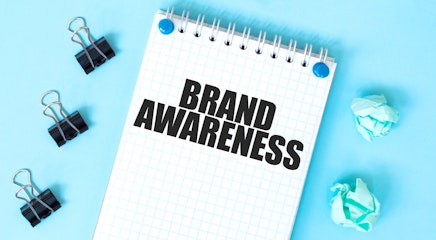According to a study by Global Lingo, poor grammar and spelling mistakes on marketing material would put 59% of Britons off choosing a company’s products or services.
We all make mistakes, but the world of print marketing is an unforgiving place and one slip could lead to your error being printed hundreds or even thousands of times!
Below we have listed 5 fatal spelling & grammar mistakes most commonly seen in print marketing and give a few tips on how to avoid them.
1. The Dreaded Apostrophe
The apostrophe can strike fear into business people (and let’s be honest, all people) when it needs to be used. The most common error, as seen in the example above, is when an apostrophe is used for a plural noun. This has led to this particular error being called the ‘grocer’s apostrophe’ because of commonly seen examples such as ‘banana’s, apple’s and pear’s’ on market signage.
2. Spelling Errors
Not everyone can be expected to have perfect spelling, but when producing marketing materials you need to double and triple-check all your spellings. Most design software used to create print materials such as Adobe Illustrator, Photoshop and InDesign do not have inbuilt spell checkers, so copying the text into a word processor or online spell-checker will help you spot those tricky errors.The Key Rules:
Double and triple-check your spelling; ideally having a second pair of eyes and a spell checker to make sure nothing escapes your attention.
Pay attention to the differences between American and British English: if your spell checker is configured to its default English (US) setting, words like ‘theatre, colour and realise’ will be automatically corrected to ‘theater, color and advertize’ in American English.
3. Your/You’re
'Your' and 'you’re' are commonly mixed up in marketing materials and can leave even big companies red-faced. Luckily, there are only two simple rules to help you work out the difference:
4. Its/It’s
'Its' vs 'it's' is another rule which can cause panic in your marketing team, but it doesn’t need to, as the rule is very simple indeed.The Key Rules:
‘It’s’ is a contraction for ‘it is’ or ‘it has’ and should only be used when these words can be used instead (eg. It’s a great article; it’s been a good day).
‘Its’ is the possessive form of the pronoun ‘it’ and should only be used to show that something belongs to ‘it’. (eg. Every house has its price; London is a big city, its buildings are very tall).
5. Their/There/They’re
This example is a double fail, with the misuse of an apostrophe (you haven’t forgotten already, have you?) for the plural of ‘employees’ and the errant use of ‘there’ instead of ‘their’ to show the ownership of the ‘hands’.The Key Rules:
‘Their’ is used to indicate the ownership of an object (eg. Their spelling is the worst in the class; Their ears were burning).
‘They’re’ is a shortened version of ‘they are’ and should only be used when it is possible to use these two words in their place. (eg. They’re great friends; They’re writing too quickly).
‘There’ is the most common of the three words, and is simply used when you can’t use either ‘they’re or ‘their’. Its functions are:
A pronoun used to introduce something (eg. There is a big event today).
An adverb indicating the opposite of ‘here’ (eg. He’s sitting over there).
An adjective to emphasise which person is being discussed (eg. That big guy over there is a great speller).
A noun that simply means ‘that place’ (eg. We went there because we were hungry.)
Have you noticed any other common spelling or grammar mistakes in print that we haven’t mentioned here?
Leave a comment below and let us know what grammar or spelling mistakes you have spotted that have put you off using a company.
posted in Marketing Advice
Share this Event







